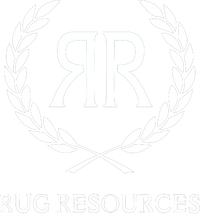How Can You Tell If It Is An Original Persian Rug?
Persian rugs are some of the most beautiful and durable of all the world's handmade rugs. They're also very popular—according to some estimates, there are more Persian rugs in American homes than any other type of carpeting. That makes it all too easy for someone unfamiliar with authentic Persian rugs to get duped by a fake one. But with these simple tips, you'll be able to tell if your rug is made in Iran or whether it came from somewhere else entirely!
Knot Density And Fiber Quality Are The First Two Key Markers For A Genuine Persian Rug.
The first two key markers are knot density and fiber quality.
Knot density is the number of knots per square inch. The higher the knot density, the better-quality carpet you have. This is because it takes longer to make a high-quality Persian rug with a low knot count than it does to make one with a high knot count.
Fiber quality refers to the type of fiber used in making your rug: Only sheep's wool can be used for authentic Persian rugs; other materials won't do. Good quality wool comes from healthy sheep graze in lush pastures and have access to clean water; these conditions help produce soft, supple fibers that will last through generations of use and care without losing their luster or color over time—and without causing allergic reactions!
Pattern Is Another Way You Can Tell If The Rug Is Authentic.
A rug pattern is another thing you can use to determine its authenticity. Patterns are often geometric and symmetrical, with some exceptions. For example, if your rug has a flowery design, then it's more likely to be an imitation Persian rug. This doesn't mean that you should avoid all floral patterns - just keep in mind that these rugs were originally made in the Middle East and thus have different designs than those made in America or Europe.
Patterns are also usually repetitive; this means that they will repeat themselves throughout the entire length of the rug without any variations or changes in appearance. If you see something that stands out as different from everything else (such as a single-colored diamond among black diamonds), then there's a chance someone may have added this on top of your original Persian carpet after it was made!
The Third Indicator Of An Authentic Persian Rug Is Color.
Color is an important part of Persian rugs, and it is used to express emotion and mood. Color is also used to create a sense of depth and movement, as well as other aesthetically pleasing effects. Colors are also used to create a sense of place, time period, or culture.
Most authentic Persian rugs have strong colors that do not fade easily in sunlight (the sun can dissipate some colors).
Natural dyes are more expensive than synthetic dyes, but they also last longer and do not harm the environment. If you notice that your rug seems to be fading or losing its color over time, it may not be an authentic Persian rug. Avoiding synthetic dyes is one way that some imposters try to pass off their products as genuine art pieces.
Look For Quality Materials Used In Production.
Real Persian rugs will always use natural materials like cotton instead polyester, which could lead them to break down much faster than normal; likewise, silk would never be used because its fibers would eventually become brittle after repeated washing cycles.

